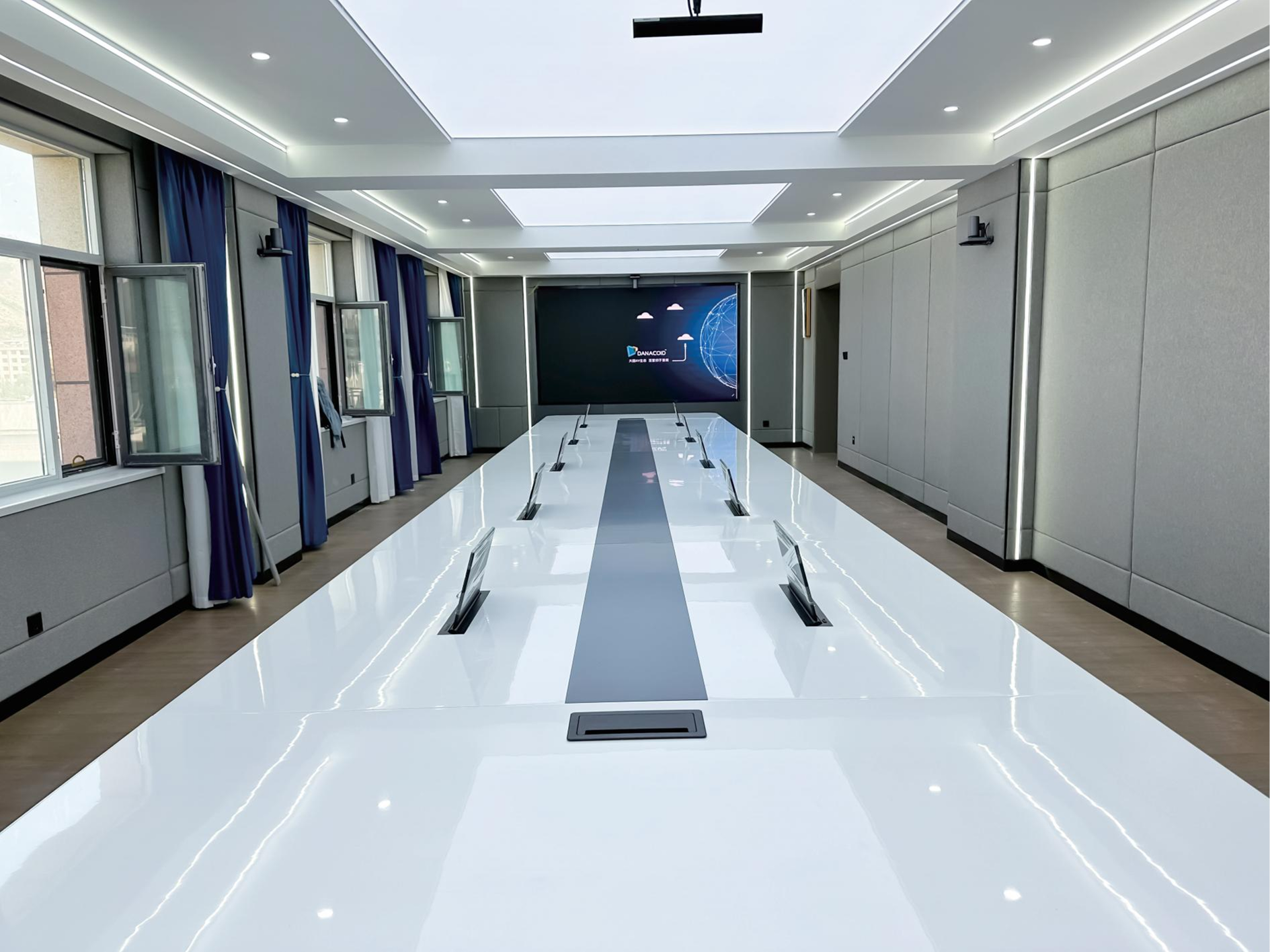Direct Sound Path Optimization
Minimizing Reflective Surfaces for Cleaner Audio
To optimize the sound quality of wall-mounted speakers, attention must be given to minimizing reflections. Reflective surfaces such as walls and ceilings can distort audio clarity. By identifying these surfaces in the listening environment, one can strategically place acoustic panels to absorb sound waves and reduce echoes, resulting in clearer audio outputs. Additionally, incorporating soft furnishings and carpets can serve as sound-absorbing materials, further enhancing the listening experience by reducing unwanted reflections. By creating a balanced acoustic environment, listeners can enjoy purer sound quality from their wall-mounted speakers.
Height Adjustments Targeting Listener Ear-Level
Proper height adjustment of wall-mounted speakers is essential for achieving optimal sound delivery. Ideally, the speaker height should align with the ear level of seated listeners, which is typically around 36 to 42 inches. This ensures that sounds are projected directly towards the listening area, enhancing clarity. Using wall mounts or adjustable brackets, speakers can be precisely positioned to match this optimal range. Testing audio clarity at various heights can further refine the setup, ensuring the most effective positioning and a more immersive audio experience.
Reducing Floor and Furniture Interference
The placement of speakers relative to the floor and furniture significantly affects sound quality. It is vital to assess the impact of floor materials, such as hardwood versus carpet, as they can influence resonance and clarity. Proper speaker placement should aim to minimize direct obstruction from furniture, ensuring an unobstructed sound path to the listener. Additionally, the use of isolation pads or platforms can decouple speakers from floors, thereby reducing resonance and enhancing sound fidelity. By strategically managing these elements, one can achieve superior acoustic performance from their wall-mounted speakers.
Spatial Imaging Enhancement
Creating balanced stereo field across dimensions
Spatial imaging is crucial in crafting an immersive audio experience. It refers to the precise positioning of sounds in a stereo field, allowing listeners to perceive music as if different instruments and voices are coming from various directions and depths. To achieve a balanced stereo field, positioning your speakers correctly is vital. Ideally, speakers should form an equilateral triangle with the listener, ensuring equal distribution of sound. Moreover, leveraging equalization settings is key to maintaining harmony across frequencies, preventing any single frequency from overwhelming the others. This setup helps enhance the depth and clarity of the audio, fostering a more natural listening experience.
Angled drivers for precision sound direction
Angled drivers significantly elevate sound dispersion and enhance listener engagement by directing audio toward the listener's ears more effectively. This design ensures a broad soundstage, offering a clearer delivery of music and dialogues. In wall-mounted speakers, angled drivers can direct sound upwards or sideways, adapting to the room's acoustics and listener's position. A study in "Audio Engineering Society" highlights that angled drivers enhance audio clarity and reduce sound reflection issues. By focusing on this technology, one can enjoy a precise and engaging audio experience, perfect for creating a home theater-like atmosphere.

Pivoting mounts for spatial customization
Pivoting mounts open new dimensions in customizing audio experiences with wall-mounted speakers. Unlike fixed mounts, pivoting ones allow the adjustment of speakers' direction, catering to various seating arrangements and listener preferences. These mounts offer flexibility, enabling users to angle speakers for optimal sound projection, thereby maximizing the audio experience. An example is a setup used by audio enthusiasts, which showed that adjusting the speaker angle with pivoting mounts improved sound distribution across a large room. By providing dynamic audio solutions, pivoting mounts enhance the auditory experience, allowing users to enjoy high-quality sound, regardless of their listening position.
Acoustic Reflection Control
Damping Structural Vibrations
Structural vibrations can significantly impact audio quality in any listening environment. These vibrations can cause sound distortion and reduce the clarity of audio playback. To counteract this, damping materials such as acoustic foam, rubber pads, or viscoelastic polymers can be strategically employed. These materials help absorb unwanted vibrations, ensuring that the sound remains crisp and clear. Practical tips for implementing these solutions include placing dampening pads beneath speakers or mounting equipment, and using wall-mounted speakers designed to minimize vibrations. This attention to detail ensures that the integrity of the audio is preserved, delivering an optimal listening experience.
Mitigating Standing Waves through Strategic Placement
Standing waves are acoustic phenomena that can significantly degrade sound quality by creating areas of resonance or silence within a room. These waves occur when sound reflects between parallel surfaces, building up in specific areas. To mitigate their effects, strategic placement of speakers and furniture is crucial. Positioning speakers at an angle to avoid parallel alignment with walls, along with the use of diffusers, can minimize these waves. Acoustic studies suggest that a well-planned speaker placement can dramatically reduce the presence of standing waves, thus enhancing the listening experience by achieving better sound balance across the room.
Bass Management in Wall Boundary Scenarios
Managing bass in wall-mounted scenarios poses specific challenges due to the reinforcement of low-frequency sounds when speakers are placed close to walls. This can lead to an overwhelming bass response, often drowning out other frequencies. To address this, bass traps can be used effectively in corners where bass energy tends to build up. These traps help absorb excess low-frequency energy, ensuring a more controlled bass response. Maintaining a balanced frequency response is essential for audio fidelity, and incorporating these elements in the setup of wall-mounted speakers can lead to a more precise and enjoyable auditory experience.
Eliminating Acoustic Dead Zones
Acoustic dead zones are areas in a room where sound fails to reach, causing a drop in audio quality. These can result from uneven speaker placement or room shapes that prevent sound waves from distributing evenly. To counter this, it's crucial to strategically place speakers to ensure consistent sound distribution. Using wall-mounted speakers can be an effective solution, especially when they are positioned at ear level and directed towards the listening area. An example of a room design that minimizes dead zones includes placing additional speakers in corners or elevated positions to evenly fill the space with sound. This setup not only enhances the audio experience but also ensures comprehensive coverage of all area.
Uniform Coverage Techniques Across Seating Areas
To achieve uniform sound coverage across seating areas, understanding sound coverage patterns is essential. This can be accomplished by using multiple speakers strategically placed around the room. For example, incorporating overhead or wall-mounted speakers ensures that sound reaches every corner. Techniques like angle adjustments can maximize sound dispersion. Research reveals that uniform sound coverage significantly enhances listener experience by providing a balanced auditory environment. An example can be seen in home theaters where precisely placed surround sound systems deliver an immersive audio experience irrespective of where you're seated.
Consistent Frequency Response Maintenance
Maintaining a consistent frequency response is vital for high-quality audio. Frequency response refers to the ability of a sound system to reproduce all audio frequencies equally within its range. Calibration techniques and tools can help maintain this balance over time. Modern audio systems often include automatic calibration features that adjust settings for optimal performance. Expert opinions emphasize the importance of regularly recalibrating audio systems to counteract any acoustic changes in the room—ensuring enduring audio fidelity and an unparalleled listening experience.
Height-to-Distance Ratio Calculations
Understanding the height-to-distance ratio is crucial for achieving optimal audio fidelity when setting up speakers. This ratio determines how sound waves travel through a room, ensuring that listeners experience consistent sound quality regardless of their position. To calculate this ratio, divide a speaker's installation height by the listening distance. Since different rooms have varying dimensions, it's important to adjust placements to maintain the ideal ratio for each specific environment. By carefully considering these calculations, we can position speakers to deliver the best possible listening experience across the room.
Structural Support Considerations
Ensuring adequate structural support for wall-mounted speakers involves several considerations that are vital for both safety and audio quality. The nature of wall materials, such as drywall, brick, or concrete, significantly impacts speaker installation techniques and choices. For instance, brick walls provide more robust support, whereas drywall requires additional reinforcement to securely hold speakers. Adhering to safety protocols—like using proper anchors and ensuring load-bearing capability—is essential to prevent accidents and ensure lasting installations. By understanding these variables, we make informed decisions that safeguard both our equipment and our listening environment.
Angulation Guidelines for Optimal Projection
Effective speaker angulation is fundamental for optimal sound projection and enhancing the overall listener experience. The principle behind angling speakers is to direct sound waves towards the listener's ears, reducing reflections and ensuring clarity. Different angling techniques, such as toe-in or asymmetric positioning, can significantly enhance audio perception by focusing sound directly at primary seating areas. Visual aids and diagrams can be invaluable tools—though we're unable to depict them here—in helping us visualize these strategies and apply them effectively to create an immersive auditory environment. By mastering speaker angulation, we maximize our sound setup's potential.
Environmental Integration Benefits
Complementary Acoustic Treatment Synergy
The synergy between wall-mounted speakers and other acoustic treatments is instrumental in elevating sound quality. When combined, these elements work together to fine-tune the acoustics of a space, resulting in a balanced sound stage. For instance, utilizing wall-mounted speakers alongside bass traps or sound-absorbing panels can significantly enhance overall sound clarity. One notable project that exemplified this approach involved a home theater setup where the integration of these treatments transformed an ordinary room into a cinematic experience, solidifying the merits of an integrated audio design. This not only ensures a superior listening environment but also adapts seamlessly to various acoustic challenges.
Reduced Ceiling/Floor Reflections
Wall-mounted speaker installations serve a crucial role in mitigating undesirable reflections from ceilings and floors, which often muddle audio quality. By positioning speakers strategically along the walls, direct sound reaches the listener while minimizing reflection-induced distortions. Some effective design strategies include angling the speakers slightly downward and using diffusers to dissipate excess sound waves. Research has shown that these methods can lead to clearer sound, with up to 30% improvement in audio fidelity. This highlights the importance of thoughtful wall-mounted speaker placement in achieving optimal sound clarity in a listening environment.
Clarity Preservation in Mixed-Surface Environments
Mixed-surface environments, characterized by a variety of materials like wood, glass, and carpet, pose unique challenges to audio clarity. The diversity of these materials can lead to inconsistent sound reflections, affecting the listening experience. When deploying wall-mounted speakers, selecting materials that enhance acoustics is critical. For instance, opting for fabrics that absorb sound can help maintain clear audio. Experts recommend using acoustic panels and soft furnishings in conjunction with wall-mounted speakers to mitigate unwanted reflections and reverberations. Achieving clear sound amid diverse surface types requires thoughtful planning and selection of complementary elements.
FAQ
Why is the placement of speakers at ear level important?
Positioning speakers at ear level ensures optimal sound delivery by aligning the sound waves directly with the listener's ears, resulting in enhanced audio clarity and immersion.
How do angled drivers in wall-mounted speakers improve sound quality?
Angled drivers help in sound dispersion by directing audio towards the listener's ears more effectively, which reduces reflections and ensures a clearer audio delivery.
What role do pivoting mounts play in sound optimization?
Pivoting mounts allow for dynamic adjustment of speaker direction, which can adapt sound projection to various seating arrangements and listener preferences, maximizing the audio experience.
How can I prevent structural vibrations from affecting audio quality?
Employ damping materials like acoustic foam or rubber pads to absorb unwanted vibrations, ensuring clear and crisp sound output.
What are the benefits of using wall-mounted speakers in mixed-surface environments?
In mixed-surface environments, wall-mounted speakers minimize undesired sound reflections and maintain audio clarity by being strategically positioned and used in conjunction with acoustic treatments.
Table of Contents
- Direct Sound Path Optimization
- Spatial Imaging Enhancement
- Acoustic Reflection Control
- Eliminating Acoustic Dead Zones
- Uniform Coverage Techniques Across Seating Areas
- Consistent Frequency Response Maintenance
- Height-to-Distance Ratio Calculations
- Structural Support Considerations
- Angulation Guidelines for Optimal Projection
- Environmental Integration Benefits
-
FAQ
- Why is the placement of speakers at ear level important?
- How do angled drivers in wall-mounted speakers improve sound quality?
- What role do pivoting mounts play in sound optimization?
- How can I prevent structural vibrations from affecting audio quality?
- What are the benefits of using wall-mounted speakers in mixed-surface environments?








